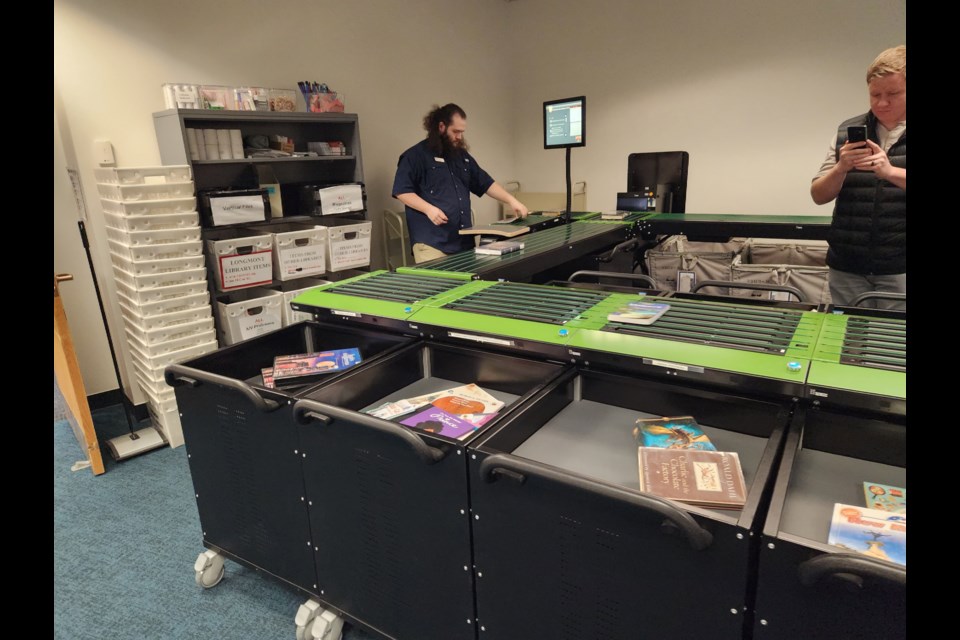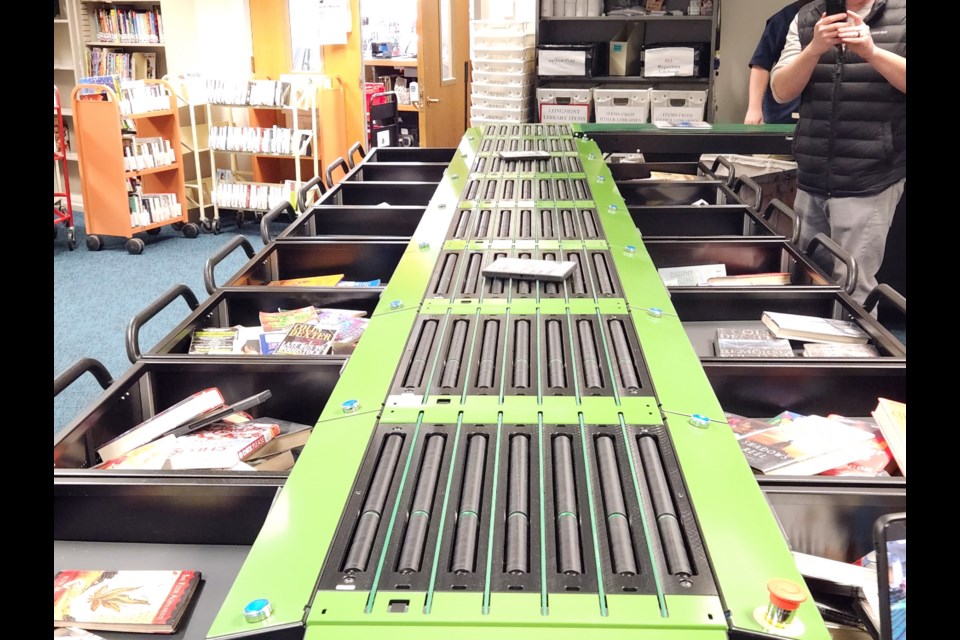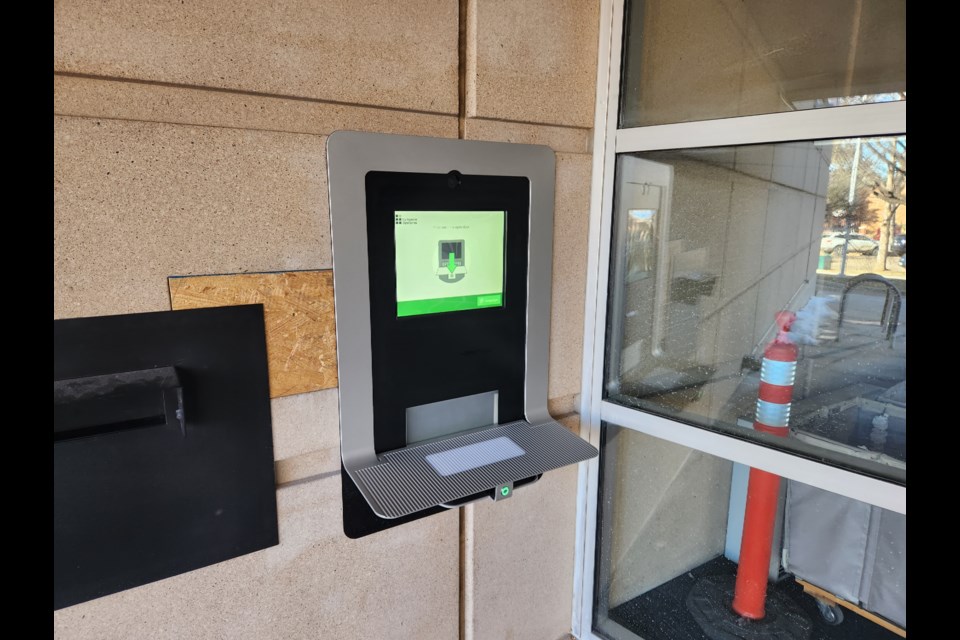In the back offices of the Longmont Library, a conveyor belt connected to 15 bins looks like something from the future.
Outside, a patron pressed a button and inserted a book, bringing the machine inside to life. Nearly instantly, the book rolls down the belt, takes a few turns and slides into one of the bins.
The Lyngsoe Systems’ Sort Mate has been up and running at the library for about a month, making work better for the library employees and improving the speed in which materials get returned to library shelves.
“We’re always looking for ways to improve work conditions for staff and improve our customer service and this sorter is a benefit for both of those,” said Julia Jacobs, head of the circulation department for the Longmont Library.
The $190,000 sorter checks in library materials immediately and accurately 24/7 and puts them into one of fifteen smart bins according to collection — for example, teen books — so they can be shelved right away.
Every item in the library was tagged with an ID about 15 years ago for security and self checkout, and the sorter uses the same system to figure out where the item should be sorted.
Previously, patrons would drop off books and staff would have to check in those materials by hand before sorting them into regular basket bins, something that would take about five seconds to do manually and require staff to bend over to reach the bottoms of the bins, according to Jacobs.
The new sorter can sort one item every two seconds and puts materials in smart bins, which have a spring that means the books to be sorted are always within easy reach.
“It’s a huge difference,” Jacobs said.
The sorter averages 1,500 items a day and 11,000 a week, with the bins holding 200-500 items depending on their size. It has three return points, one on the outside of the library, one just inside for patrons and one inside the office for staff return, where books from the other “old school” book drops or drive-up drops are taken.
Along with the cost of the sorter, the project totalled $230,000 for installation and construction like cutting holes in the wall. With the investment, the sorter is about eight times faster than the previous system — saving significant staff time — and gets materials back on shelves much more quickly.
To return materials, patrons simply press the button at the return point and put in materials one at a time. The indoor point is available during regular library hours, and the outdoor return is available 24/7.






